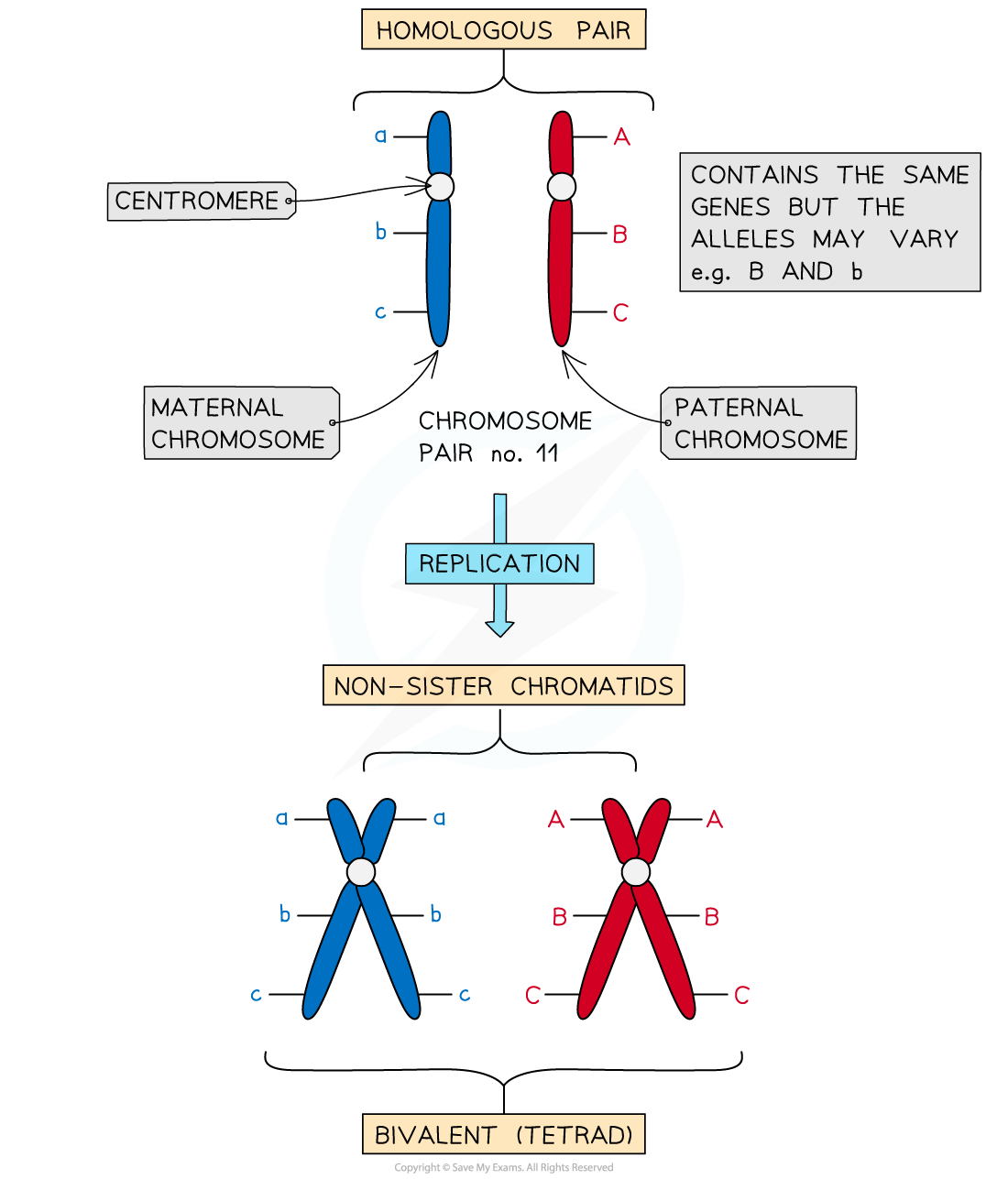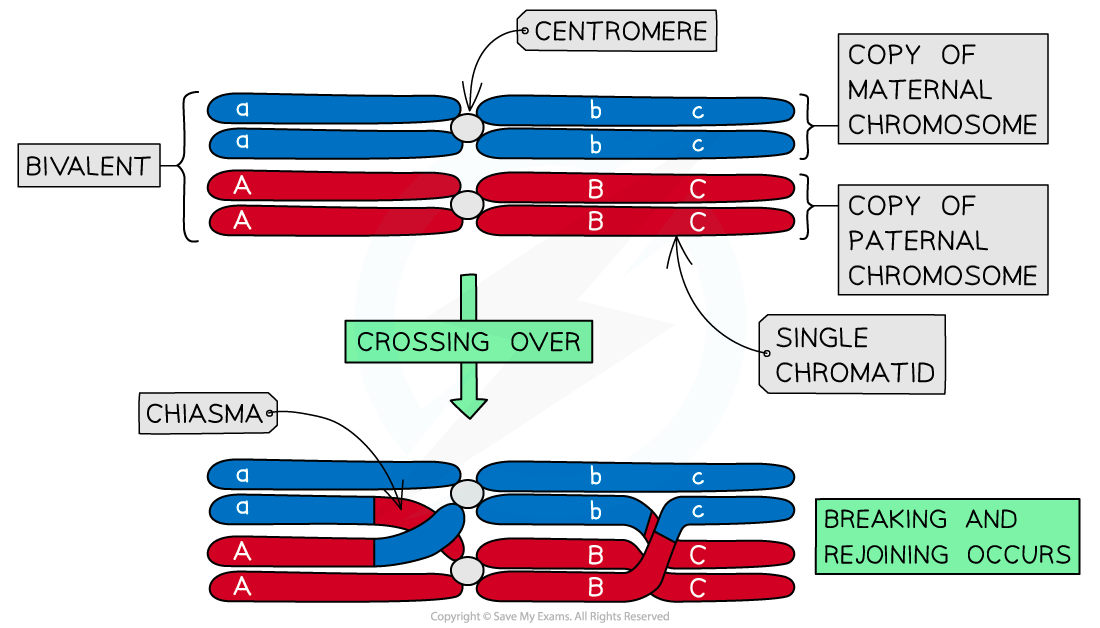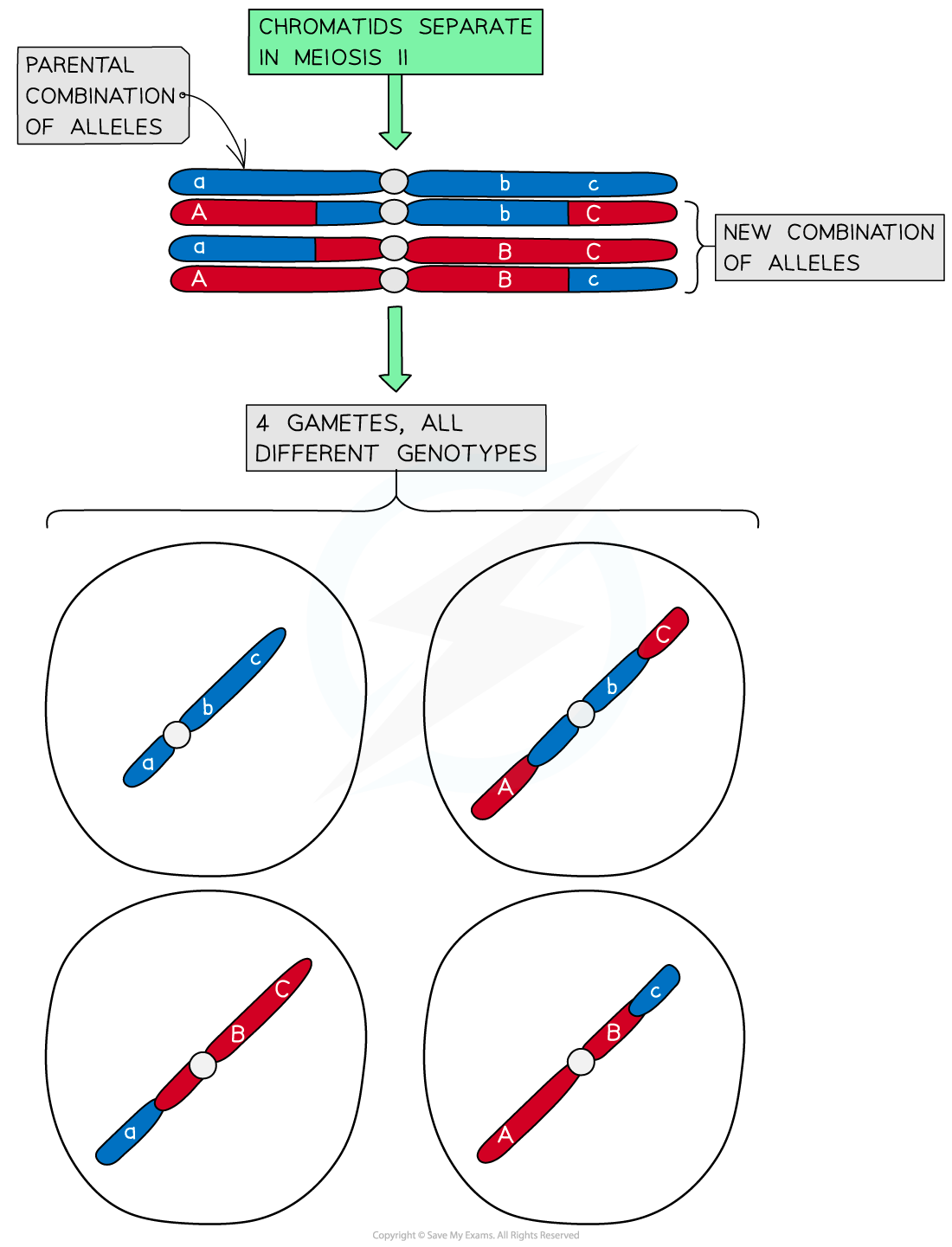Crossing Over
Crossing over is the exchange of DNA material between non-sister homologous chromatids
- Meiosis has several mechanisms that increase the genetic diversity of gametes produced
- Both crossing over and independent assortment ( sometimes also called random orientation) result in different combinations of alleles in gametes
What are non-sister chromatids?
- In a diploid cell, each homologous pair of chromosomes consists of one chromosome that originated from the organism's father, and one from the mother
- During replication prior to meiosis, each chromosome copies to form a bivalent
- The chromatids align in prophase I, during which paternal chromatids and maternal ones can line up directly against each other
- If a pair of adjacent chromatids are originated from two different parental chromosomes, they are called non-sister chromatids
- As such, they carry the same genes but can carry different alleles

Non-sister chromatids originate from different parents' chromosomes and align during prophase 1
Chiasmata Formation
Crossing over
- Crossing over is the process by which non-sister chromatids exchange alleles
- Process:
- During prophase I, homologous chromosomes pair up and are in very close proximity to each other
- The non-sister chromatids can get entangled and 'cross over' each other
- The entanglement places stress on the DNA molecules
- As a result of this molecular stress, a section of chromatid from one chromosome may break and re-join with the chromatid from the other chromosome
- The breaking and re-joining is catalysed by endonuclease and DNA ligase enzymes respectively
- This swapping of alleles is significant as it can result in a new combination of alleles on the two chromosomes
- Any process that involves breaking and re-joining of DNA to create new combinations of genetic information is called recombination
- DNA/chromosomes that have exchanged DNA in this way are referred to as recombinant
- When the DNA coils up, DNA strands at the crossing points remain attached to each other, so this causes the chromosome structure to change shape, developing an X-shaped join
- These crossing points are called chiasmata (singular: 'chiasma')
- There is usually at least one, if not more, chiasma present in each bivalent during meiosis
- Crossing over does not just occur between non-sister chromatids that are immediately adjacent to each other
- Crossing over can occur from one chromatid to either/both chromatids of the adjacent homologous pair

The formation of chiasmata (following synapsis)
New Allele Combinations
Crossing over produces new combinations of alleles on the chromosomes of the haploid cells
- So within a bivalent, or tetrad, there are 4 chromatids lying alongside each other and forming chiasmata
- Some of these chromatids will have exchanged lengths of DNA with each other at the chiasmata
- Each chromatid from a tetrad separates from the others during meiosis II
- Each chromatid goes on to form a haploid gamete
- And so a different range of alleles will be carried in each gamete cell
- This contributes greatly to intraspecific variation
- Back in prophase I, crossing over is more likely to occur further down the chromosome, away from the centromere
- Because areas of DNA away from the centromere can flail around more, they are more likely to become entangled
- Gene locus can therefore affect the genotype spread within a population, based on the likelihood of crossing over generating new allele combinations

Distinct allele combinations appear in haploid gametes following crossing over
- Because of the random nature of how chromatids align and where they break, there is an almost infinite range of combinations of how DNA can recombine during crossing over
- This explains that even in a very large population, no two individuals will have exactly the same genotype (except identical twins)
Exam Tip
Independent assortment can create a number of combinations that can be calculated. However, crossing over generates an incalculable amount of variation (we can assume it's infinite), just because of the random nature of where chiasmata can form.
